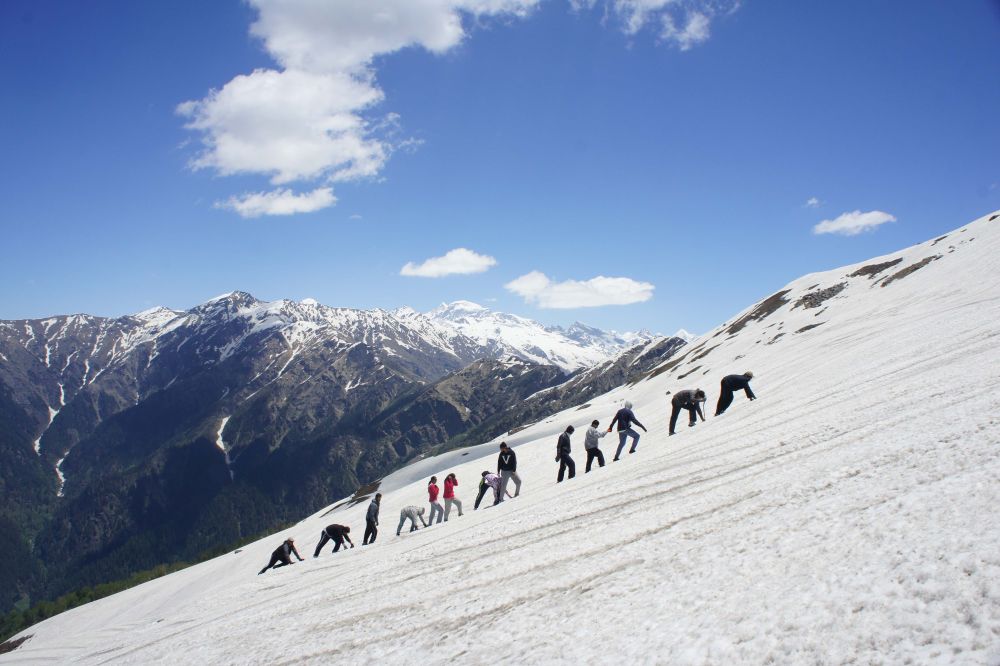

The Chanderkhani Pass, nestled in the Kullu valley of Himachal Pradesh, is a popular destination among trekkers and adventure enthusiasts. Situated at an altitude of approximately 3,660 meters above sea level, it offers panoramic views of the Deo Tibba peak, Pir Panjal, and Parbati range of mountains. The pass is known for its scenic beauty, featuring lush green meadows and a rich variety of flora and fauna. Coupled with this natural splendor is the ancient village of Malana, which is steeped in unique cultural traditions and often referred to as the 'oldest democracy in the world.'
Tourism in this region dates back to the early days of British rule in India when Malana caught the eye of travelers for its distinct customs and governance system. Over the years, Malana became an enigmatic cultural spot, whereas Chanderkhani Pass started attracting trekking enthusiasts due to its challenging yet rewarding trails.
In terms of the broader history of tourism in Himachal Pradesh, it wasn’t until the late 20th century that activities like trekking and village tourism started gaining momentum. The establishment of Himachal Pradesh Tourism Development Corporation (HPTDC) played a critical role in promoting the natural and cultural heritage of regions like Chanderkhani Pass and Malana. The state government, recognizing the potential in tourism, has ever since been actively promoting responsible and sustainable tourism practices throughout the state, including in the Kullu region.
The latest trends in tourism across Chanderkhani Pass and Malana include a growing emphasis on ecotourism and sustainable travel. With an increase in awareness about the environmental impact of tourism, travelers are now seeking experiences that are environmentally friendly and culturally respectful. Trekking, camping, and nature walks conducted by local guides and outfitters who follow the principles of 'Leave No Trace' are becoming exceedingly popular.
Another trend is the exploration of the mysterious and remote village of Malana. Despite modern influences, the villagers have managed to preserve their local customs and rituals, which is of great interest to cultural anthropologists and curious travelers alike. But it's important to note that Malana has specific visitor guidelines to maintain its cultural integrity, and tourists are expected to be sensitive to local traditions.
Homestays and community-run guesthouses are also on the rise, offering visitors an immersive experience in the local way of life while ensuring that the benefits of tourism are well distributed among the local community.
Adventure tourism is also gaining popularity, with many operators offering paragliding, rock climbing, and river rafting in addition to trekking. This caters to the diverse interests of tourists and opens up new avenues for economic development in the region.
Moreover, the state tourism board has been organizing various festivals and events to showcase the cultural richness of Himachal Pradesh. These events attract tourists from all over the world, adding to the allure of places like Chanderkhani and Malana.
In summary, tourism in Chanderkhani Pass and Malana has a rich history that has evolved over the years, with current trends focusing on sustainable practices, cultural preservation, and adventure tourism. Both locales offer a unique blend of nature and culture that continues to enchant visitors from across the globe.